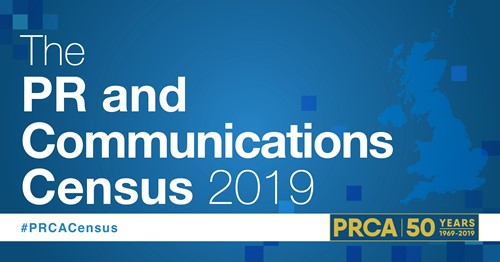
PRCA'S PR AND COMMUNICATIONS CENSUS INDICATES AN INDUSTRY IN TRANSITION
There are certain stereotypes that pervade across the PR and communications landscape: that it’s an overwhelmingly white industry, that it’s largely female, that it has long hours. These are stereotypes supported by data. But, reassuringly, things are also changing in PR and comms, presenting an industry in the midst of a transition.
The PRCA’s annual PR and Communications Census documents the demographics and trends within the industry, identifying key drivers and areas of improvement. That portrait is somewhat worrying from a work-life balance standpoint, but presents a positive portrayal of issues like the gender pay gap and communications measurement.
The industry is still considerably staffed by women with men filling only 33% of roles. That also means significant work has been done on the part of agencies – who were the worst offenders – with regards to closing the gender pay gap. The gap is now 13.6%, but shows a decrease from 21% just last year. Communications professionals are also seeing an increase in their ability to work flexibly, with an 8% increase in the use of flexitime. However, a third of PR professionals don’t have any flexible working arrangements.
Worryingly, a third of the industry has also reported diagnosis with mental illness. Though this question had not been asked in the past, thereby making it difficult to determine if there has been any change in the rate of reporting mental illness, 32% of respondents this year revealed they have suffered or been diagnosed with a mental illness. Francis Ingham, director general of the PRCA, says, “In too many areas, we are not making progress. There has essentially been no movement on diversity. Mental health is a huge issue, made all the worse by often crushingly long hours. And incomes have declined for agency practitioners, in-house ones, and freelancers alike.”
His reference to long hours is supported by the data, with half of respondents reporting that they work 45 hours per week, with some reporting working over 60 hours per week. A scant 21% report working only their contracted 35 hours per week. That challenge is made all the more worrying by the fact that salaries are dropping across the industry. In agencies, in-house teams and for freelancers alike, salaries have all decreased.
But, one of the most promising aspects of the research is the information about measurement and evaluation. Last year, 33% of respondents said they did not use any PR evaluation methods. Judging the value of the contribution made by PR and communications is of the utmost importance to ensuring the long-term reputation of the industry. This year, those reporting they don’t consider measurement or evaluation has dropped to 26%.
“For years now, talent has been the number one headache for PR leaders,” Ingham says. “Declining salary levels will only compound this. Our longstanding belief is that evaluation is the answer to this problem. Until we can prove the value that we bring, we will not be able to charge the price that we should, and so to pay people the amount that they deserve. So we now double down on our work with AMEC, to build on our shared progress in this field, so that a growing industry will also mean a better rewarded one.”
The PRCA has worked with AMEC – the international communications measurement and evaluation association – to ensure standards are put in place regarding the measurement of communications and that those strategies are embedded into PR practice. The Barcelona Principles – at the heart of this commitment – however, are only used by 9% of respondents, indicating there is still work to be done.

